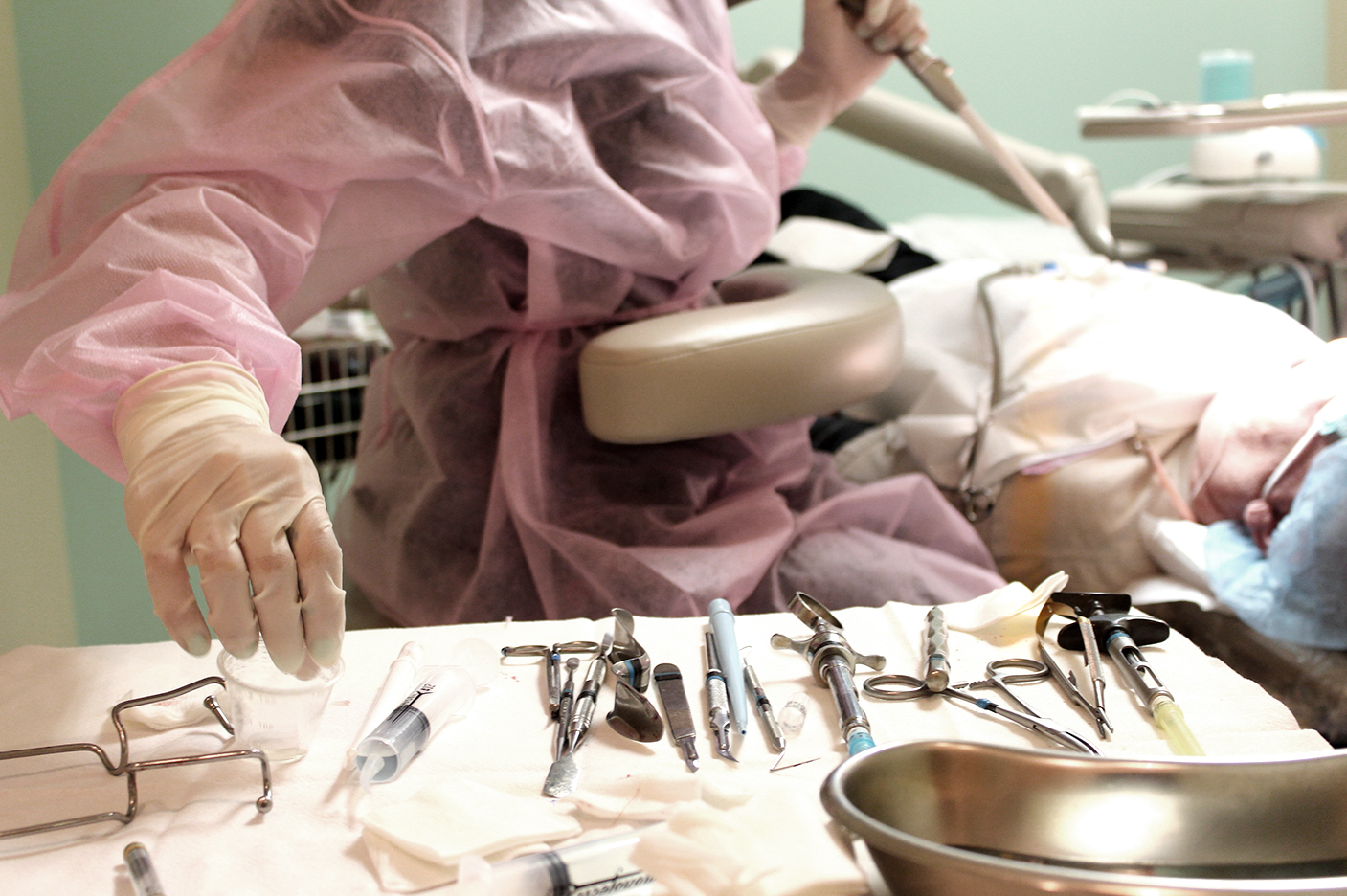Explore Options for Advanced Surgical Periodontal Treatment
Surgery is never the first option, but in some cases periodontal surgery is necessary. For example, when the tissue around your teeth becomes unhealthy and cannot be repaired with nonsurgical treatments, periodontal treatment can be recommended. It is usually recommended as a last resort if your gum disease has reached severe stages with excessive tissue or your jawbone needs rebuilding
Dr. Tredinick has years of experience conducting periodontal surgery and understand the stress or discomfort that surgical procedures may cause certain patients. The Tredi Dental team will care for you, explain your operation in detail, and readily answer all of your questions. They will ensure a safe and aseptic surgical environment while providing comfort before, during, and after your procedure.
You have the option to receive your periodontal surgery while under conscious oral sedation or Intravenous (IV) sedation.
The most commonly prescribed four types of periodontal surgical treatments are the following.
Periodontal Pocket Reduction
When your mouth is healthy, your gum and bone tissue should fit snugly around your teeth. However, with periodontal disease, the supporting tissue and bone are destroyed which causes the gum to separate from the teeth.
Over time spaces between the gum tissue and the teeth form, called pockets. The pockets make an increasingly large space for bacteria to multiply and invade. The pockets may continue to deepen and collect even more bacteria, which results in further bone and tissue loss. If you allow this to continue, too much bone will be lost and the teeth will have to be extracted for your health.
When the pockets have become too broad to clean at home or with routine professional care, we recommend a pocket reduction. This procedure involves folding back the gum tissue and eliminating the disease-causing bacteria by directly removing it, then securing your gums back in place. In some cases however, it is necessary to smooth damaged portions of the bone to limit the areas where bacteria can hide and help the gum tissue re-attach to healthy bone.
You will decrease the likelihood of severe health problems associated with periodontal disease and increase your chances of keeping your natural teeth by reducing the pockets and continuing good daily oral hygiene and professional care.
Periodontal Regenerative Procedures
Periodontal disease is a serious gum infection that if left untreated, will destroy the supporting gum tissue and the bone surrounding your teeth. If too much gum and bone tissue are lost, it becomes imperative to extract the teeth. In certain cases, Dr. Tredinick will recommend a regenerative procedure to avoid removing the tooth and to help you grow new tissue and bone for a healthier smile.
To begin the periodontal regenerative process, the doctor must fold back the gum tissue and remove all disease-causing bacteria. The tissue-stimulating proteins then encourage your body’s natural regenerative abilities to regenerate your bone and gum tissue, membranes (filters), or bone grafts are placed under the gums.
The Benefits of Regeneration
Regeneration helps create a strong, healthy foundation that a tooth needs to remain healthy longterm after the damage inflicted on your mouth by gum disease. The elimination of bacteria and the regeneration of bone and gum tissue help reduce pockets, but a combination of daily oral hygiene and professional maintenance care following treatment will increase your chances of keeping your natural teeth and decrease the chances of developing severe health problems that are associated with gum disease.
Functional Crown Lengthening
The Tredi Dental team suggests functional crown lengthening if there is insufficient structure below the gum line for restoration, or if your teeth are decayed or broken below the gum line.
During this procedure, Dr. Tredinick will adjust the gum and bone level to expose more of the tooth so it can be restored. The crown lengthening treatment can help make restorative or cosmetic dental procedures possible without the irritation or pain of having to cut into the gum line.
Soft Tissue Gum Grafts
If you want to stop gum recession and improve the aesthetics of your gum line, soft tissue grafts are a periodontal technique that can do just that!
Gum recession creates the illusion of excessively long teeth due to the exposed tooth roots. It can also cause overly sensitive teeth in regard to hot and cold foods and liquids.
Gum recession can occur for a variety of reasons, from aggressive tooth brushing to periodontal disease. Tredi Dental is trained to identify the factors contributing to your gum recession issue during your appointment and help you control them. Then, we can perform a soft tissue graft to repair the defect, preventing further recession and possible bone loss.
Benefits of Soft Tissue Grafts
Not only do soft tissue gum grafts reduce gum recession and bone loss, but they can also cover exposed roots to protect them from decay, reduce tooth sensitivity, and improve the aesthetics of your smile. Whether you undergo this procedure to enhance function or cosmetics, patients usually receive the benefits of both: Improved periodontal health hand in hand with a beautiful new smile. These are the keys to smiling, eating, speaking comfortably and confidently.
Grafts are best place prior to orthodontics as to gain gain gingival thickness, avoid future recessions, and to prevent further periodontal problems.
